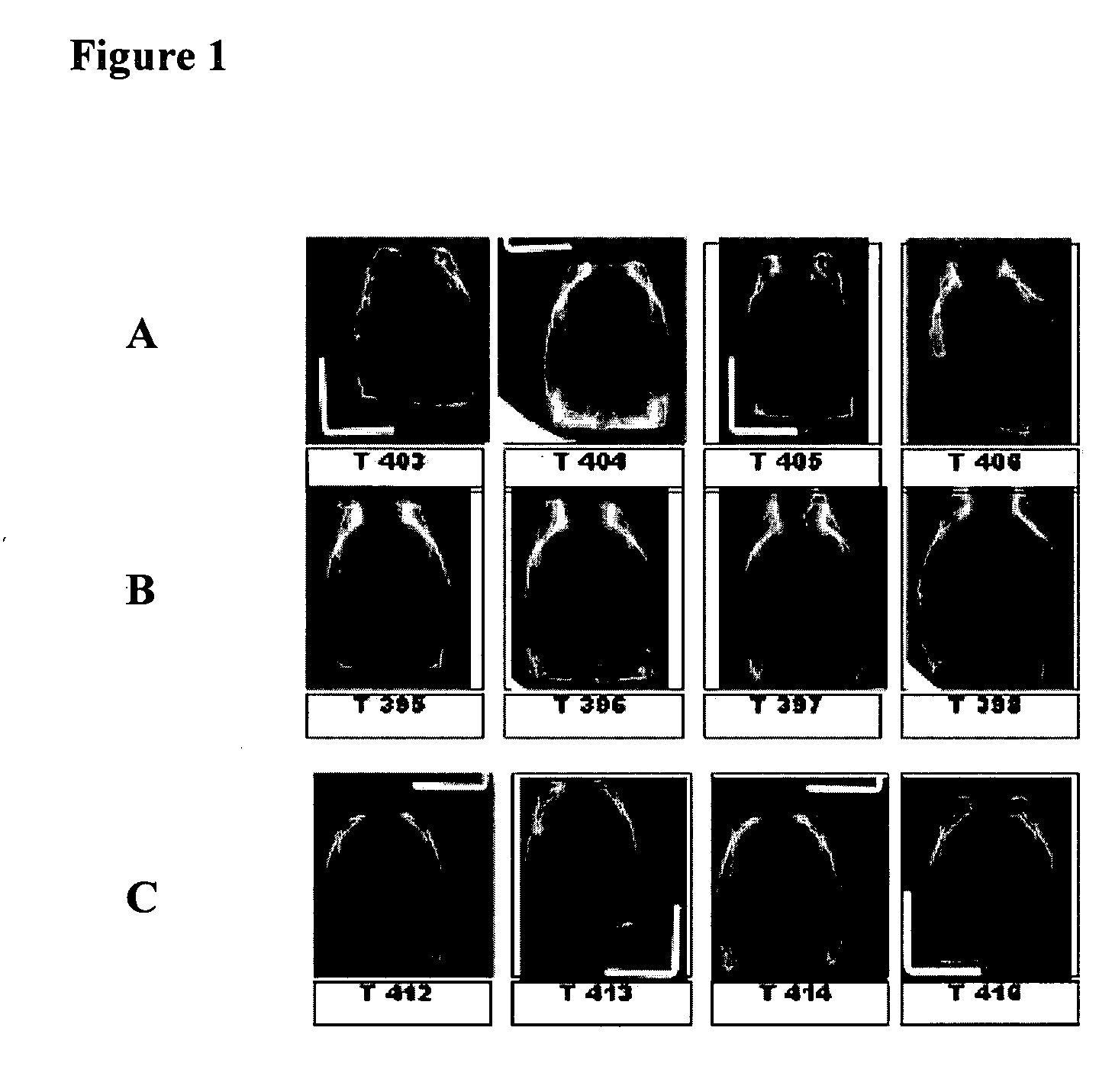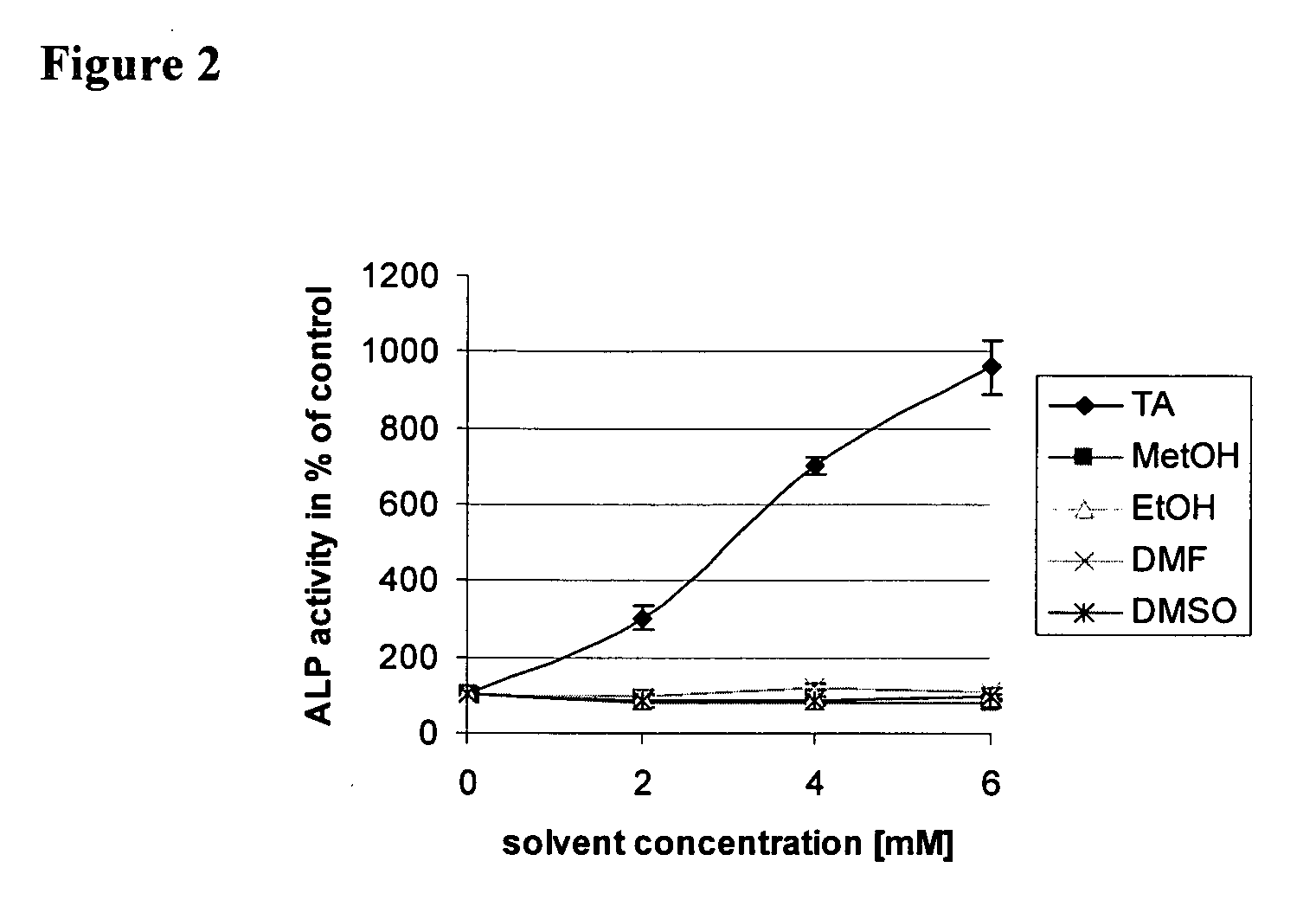Resorbable polymer composition, implant and method of making implant
a polymer composition and polymer technology, applied in the field of new bone healing, can solve the problems of difficult delivery of a correct dose of bmps, poor understanding of the whole bone healing process, and high cost of bmps produced by genetic engineering
- Summary
- Abstract
- Description
- Claims
- Application Information
AI Technical Summary
Benefits of technology
Problems solved by technology
Method used
Image
Examples
example 2
[0030] This rat study shows the osteogenetic effect of PLA / PGA / TMC and PLDLA / PLA / TMC membranes when treated with triacetin. The details of the tested membranes can be found in the following table 2.
TABLE 2Materials and codes of Example 2CodeMaterialsE1M-11 ® triacetinPLA / PGA / TMC (80 / 10 / 10), treated with triacetin(see Example 1)E1M-11 ®PLA / PGA / TMC (80 / 10 / 10)
[0031] The study design included 4 rats with 8-mm artificial craniotomy defects each. The defects were treated with biodegradable membranes. The matrixes of the resorbable membranes are presented in Table 2.
[0032] The rats were sacrificed 5 weeks after the operation and the calvarial bone excised. Bone regeneration was determined by radiography.
[0033]FIGS. 1a to 1c illustrate the results showing that triacetin treated membranes enhance bone regeneration determined by radiography.
example 3
[0034] According to one embodiment of the method of the present invention, a glycerol mono-, di-, or triester with a carboxylic acid having 1 to 6 carbon atoms, such as triacetin, is added to the polymer matrix that has been already fashioned into the form of a medical implant.
[0035] Polymer compositions were prepared by dry-mixing commercially available granular-form base materials with commercially available copolymer additives. The material composition was 80 wt-% P(L / DL)LA (70 / 30) and 20 wt-% PLLA / TMC (70 / 30). The components were weighed according to a desired weight ratio into a container, which was then rotated in a Turbula T2F shaker mixer for 30 minutes until a homogenous dry mixture was obtained. The resulting mixture was then dried in vacuum at 60° C. for 8 to 12 hours and thereafter melt-blended and injection-moulded in to plate-shaped test pieces. The injection-moulding machine used was a fully electric Fanuc Roboshot Alpha i30A injection-moulding machine with a mould c...
example 4
[0040] Example 4 presents one preferred embodiment of the present invention, where the implant is a barrier membrane in Guided Tissue Regeneration (GTR) to treat a periodontal defect.
[0041] The membrane comprises PLA / PGA-matrix polymers. The membrane is packaged in a slot of a package, such as a plastic blister. The preparation of the membrane is conducted during manufacturing to generate a membrane pre-soaked with triacetin or as one stage of surgical operation as follows:
[0042] 1. After opening the package, a proper amount of triacetin is poured into the membrane slot. The membrane is fully immersed in triacetin for an adequate period, for example 5 minutes to 60 minutes, preferably for 60 minutes.
[0043] 2. The membrane is removed from the slot.
[0044] 3. The surplus of triacetin is wiped away.
[0045] 4. The membrane is ready for use as a barrier between the gingival soft tissue and the healing bone tissue and / or periodontal tissues in order to prevent the gingival soft tissue ...
PUM
| Property | Measurement | Unit |
|---|---|---|
| Weight | aaaaa | aaaaa |
| Bioabsorbable | aaaaa | aaaaa |
Abstract
Description
Claims
Application Information
 Login to View More
Login to View More - R&D
- Intellectual Property
- Life Sciences
- Materials
- Tech Scout
- Unparalleled Data Quality
- Higher Quality Content
- 60% Fewer Hallucinations
Browse by: Latest US Patents, China's latest patents, Technical Efficacy Thesaurus, Application Domain, Technology Topic, Popular Technical Reports.
© 2025 PatSnap. All rights reserved.Legal|Privacy policy|Modern Slavery Act Transparency Statement|Sitemap|About US| Contact US: help@patsnap.com


